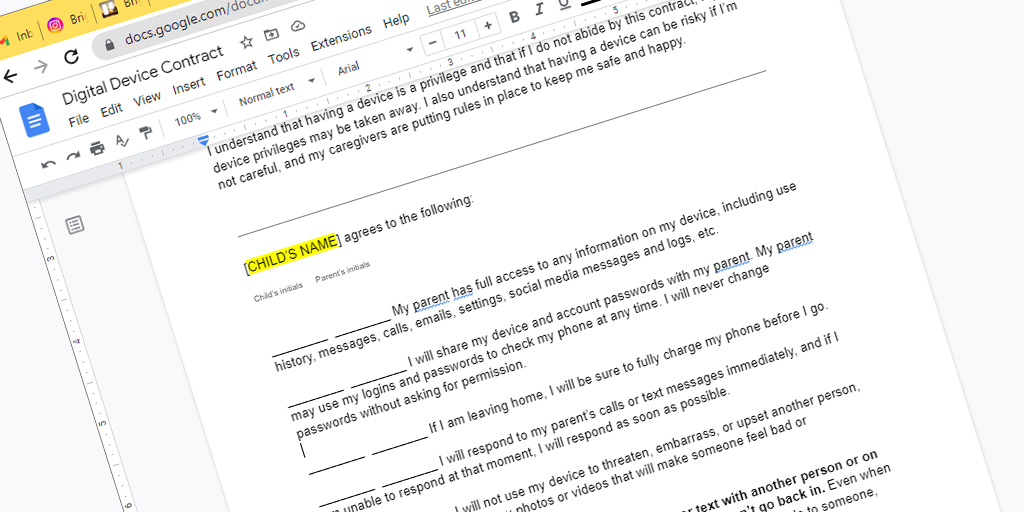
As the digital world continues to become more integrated into our lives, it’s important for parents and guardians to set clear boundaries with children about their device use. By implementing a digital device contract, you can help ensure that your kids are using technology safely and responsibly. Setting expectations as a family will help kids develop healthy habits around technology usage, while also providing an opportunity for open dialogue about what kids encounter online.
You can create your own from scratch, or use a customizable one — like our free Digital Device Contract Template.
When customizing the contract for your family, it’s important to provide clear guidelines on how devices should be used. Some of these guidelines may include:
It’s also important to discuss what types of content are appropriate for them to view or share online across videos, images and text messages.
In addition to laying out specific rules regarding device usage, a digital device contract should also include consequences if those rules are not followed. For example, if your child goes over the agreed-upon time limit, then there could be restrictions placed on their access for the remainder of the day or week. You may also want to consider rewarding your child for following the rules, such as providing extra time if they have been particularly responsible in their device use.
The ideal moment to first introduce a digital device contract is when your child first gets his or her own phone or tablet. By putting together this document ahead of time, you can ensure that you both understand what is expected from the start. This will help avoid any confusion down the line and make sure that everyone knows exactly where they stand regarding usage rules and expectations.
Another good time to introduce or update your existing digital device contract is when your family’s circumstances change (e.g., moving house, starting at a new school). This gives you an opportunity to review how things are going so far and make any necessary adjustments. It’s also a good way to reiterate the importance of responsible online behavior and make sure your child is following the rules.
Finally, any time that your child expresses a desire to explore new technologies — whether it’s social media, video streaming services, or something else — it can be useful to have a digital device contract in place to help them understand the consequences of their actions. This can also be a great time to sit down and have an open conversation about the potential dangers of these new technologies and how they should be used safely.
Parents often make the mistake of thinking that talking to their kids about digital device contracts is a one-time conversation. But this type of dialogue should be an ongoing process throughout your child’s development as they learn how to safely and responsibly use technology. It's important for parents to stay informed on the latest trends in online safety, such as popular phishing scams or major password breaches. That way, you can discuss these topics with your children in an age-appropriate manner.
It’s important for both parties to understand exactly what is expected from them, so that everyone knows where they stand if any issues arise later on down the line. Be sure to explain each rule clearly and provide examples if necessary. Give your child space to ask questions while you review the contract.
Kids need to know that there are real repercussions for not following through with the terms of the agreement; otherwise, why bother making one at all? Make sure you outline clear consequences ahead of time and enforce them consistently when needed.
It's important to remember that you, as the parent, have a responsibility as well. Make sure you set realistic expectations for yourself: be diligent about monitoring your child’s online activity and checking in from time to time to make sure they are abiding by the contract. If there are any issues, be sure to address them immediately and take corrective action if needed.
You also have the opportunity to lead by example; if your child agrees not to use their phone during meals, you should stay off your phone, too.
Lastly, don't forget to revisit the digital use contract periodically with your child as they grow and learn. As technology advances, so too will the risks associated with it; being aware of these changes can help you keep your child safe online.
By following these tips, you can help ensure that your conversation about digital device contracts goes smoothly and that everyone understands the expectations set out in the agreement. To get started customizing your own contract, download this free template.